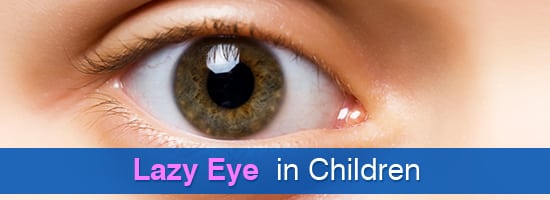Lazy eye, also referred to as amblyopia, is a common vision problem among young children. It begins when one eye has better focus than the other, causing the brain to ignore the weaker image it receives from the affected eye. Over time, the vision in the lazy eye deteriorates. If left untreated, the vision in the affected eye will never develop correctly, and the impairment will become permanent.
Lazy eye can run in families, and is more common in children who were born prematurely or with a low birth weight.
What are the signs of lazy eye?
It is not always possible to know for sure when looking at your child that he or she has a lazy eye. However, some common signs are:
- One eye that wanders, either outward or inward
- Eyes that do not work well together
- Blurry vision
How is lazy eye diagnosed?
Your child should receive regular eye exams, especially before starting school. Early intervention is important when it comes to catching vision problems, especially because lazy eye becomes more difficult to treat after seven to nine years of age.
If your child’s eyes are moving abnormally, or if he or she has any sight issues, you will likely need to see an ophthalmologist. During this visit, your child’s doctor will check his or her vision and look for any underlying problems that could be contributing to a lazy eye.
How is lazy eye treated?
In general, treatment of a lazy eye involves forcing your child’s brain to use images received from the affected eye so that it becomes stronger. One of the most common ways to achieve this is with the use of an eye patch over the non-lazy eye. Your child should follow the ophthalmologist’s directions and wear the patch as often as recommended. It might be hard for your child to use the weaker eye at first, but there will be gradual improvement.
For milder cases, using eye drops to blur the vision of the non-lazy eye – and force the lazy eye to work harder – may be prescribed for times that your child is reading, writing, or playing with toys. Sometimes, surgery is necessary to correct the eye muscles or to treat underlying issues, such as strabismus.
It can take months to treat a case of lazy eye, and regular monitoring by your child’s ophthalmologist is an important step in the process.



